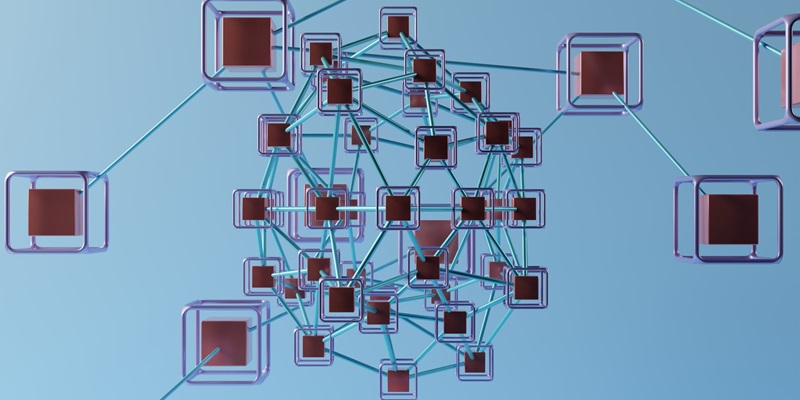The internet has evolved significantly over the years, from the early age of Web 1 to the current era of Web 2. However, with the emergence of Web 3, we are poised to enter a whole new level where everything is fully digital, and individuals can finally own and monetize their data. In this article, we will delve into the concept of ownership in Web 3, explore the blurred road to its realization, discuss the role of blockchain and micropayments, and highlight the importance of security, privacy, scalability, and transaction fees. Finally, we will examine the example of the scalable BSV Blockchain and how it can enable a Web 3 reality.
The Concept of Ownership in Web3
At the core of Web3 lies the idea of ownership – the ability to truly own things in a digital environment. In Web1 and even Web2, ownership has been elusive, with centralized platforms controlling and monetizing user data. However, Web3 aims to change this paradigm by empowering individuals to have complete ownership and control over their digital assets on the internet. This marks a significant shift in the way we interact with and utilize the vast expanse of the digital realm.
The Blurred Road to Web3
While the potential of Web3 is exciting, the journey towards its realization is not without challenges. The path to Web3 has been blurred amidst the overwhelming enthusiasm surrounding its possibilities. To truly harness the power of Web3, a clear roadmap needs to be established, guiding the development of infrastructure, standards, and protocols necessary for its widespread adoption. This clarity will help navigate the complex terrain of technology, regulation, and user experience, ensuring a seamless transition towards a Web3 future.
Blockchain and Micropayments in Web3
Blockchain technology plays a vital role in enabling ownership in Web3. Its decentralized nature ensures that individuals have complete control over their data, eliminating the need for middlemen. Additionally, blockchain’s transparent and immutable nature provides a secure and trustworthy environment for conducting transactions and maintaining ownership records. Micropayments, on the other hand, offer a groundbreaking opportunity to monetize digital assets. The ability to conduct small-scale, instantaneous transactions opens up new avenues for creators, content providers, and individuals to earn value directly from their contributions.
Security and Privacy in Web3
In a world where data breaches and privacy concerns have become increasingly prevalent, Web3 introduces a paradigm shift towards enhanced security and privacy. A truly decentralized blockchain provides a secure infrastructure, making it difficult for malicious actors to compromise data. Additionally, the transparency and immutability of blockchain transactions ensure that users can trust the integrity of the data they interact with. By leveraging these technological advancements, Web3 presents an opportunity to regain control and protect our personal information in the digital realm.
Scalability and Micropayments
For micropayments to become a reality in Web3, scalability is crucial. A scalable blockchain empowers the network to handle high transaction volumes while keeping fees low. By continuously increasing data block size and throughput, a scalable blockchain reduces transaction fees, making micropayments feasible and cost-effective. This scalability is essential in order to create an economical and efficient ecosystem for the ownership and monetization of digital assets.
Transaction Fees and Scaling
To enable micropayments, transaction fees must be inconsequential. Scaling, therefore, becomes key in reducing transaction fees and making Web3 a reality. Traditional blockchains often face challenges in this area due to limited block sizes and slower transaction throughput. However, with a scalable blockchain, these limitations are overcome, allowing for continuous growth of data block sizes and throughput. As a result, transaction fees are significantly reduced, enabling the viability of micropayments on a global scale.
BSV Blockchain
The BSV Blockchain serves as a prime example of a scalable solution for Web3. With the capability to complete 4GB data blocks and process 50,000 to 100,000 transactions per second, the BSV Blockchain showcases the potential for high-volume, low-cost transactions. By achieving unparalleled scalability, the BSV Blockchain paves the way for the realization of a Web3 future, where micropayments can thrive as individuals read, write, and own their data.
Web3 and Micropayments
By enabling micropayments, Web3 transforms the way we interact with the internet. From content consumption and creator compensation to online services and data sharing, micropayments empower individuals to earn and control value in real time. Web3 bridges the gap between ownership and monetization, creating an ecosystem where users have full control over their digital assets, while the internet becomes a thriving marketplace for the exchange of value.
Web3 represents a paradigm shift towards true ownership and monetization in the digital realm. By leveraging blockchain technology and enabling micropayments, individuals can regain control over their data, unleashing a wave of innovation and economic empowerment. Scalability and transaction fees play critical roles in ensuring that micropayments are viable and accessible to all. The BSV Blockchain serves as a testament to the scalability required for a Web3 reality, where ownership and monetization of data become the norm. As we embark on this transformative journey towards Web3, let us embrace the possibilities and unlock the vast potential of the digital world.

